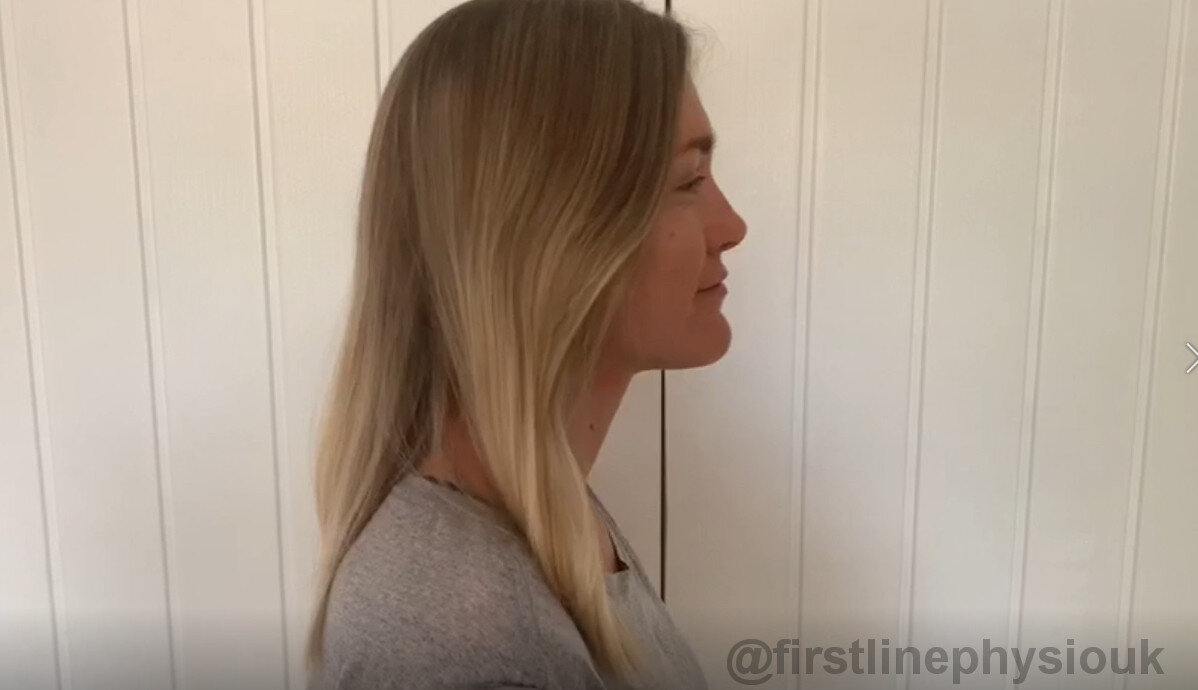What is Cervical Spondylosis?
Cervical spondylosis is the most common cause of neck pain in people over 50. Here we’ll discuss what causes it, the main symptoms and simple physiotherapy exercises to help the pain it can cause.
Cervical spondylosis (also known as cervical osteoarthritis or degenerative disc disease) is the name given to age-related changes to the neck. This condition affects different parts of the cervical spine (the neck), including the discs, joints and ligaments.
As we age, the discs in our spines lose water and become more flat. This reduces the cushioning on the joints either side of the discs and means that our spines cannot absorb shock as well. This can sometimes mean that the cartilage that lines the vertebrae either side of the disc rub against each other and wear down. Occasionally, bony spurs may develop around the areas where the vertebrae are rubbing against each other.
Degeneration is a natural process our bodies go through as we age (similar to grey hairs and wrinkles in the skin). In many people, the degeneration does not cause any symptoms.
It has been found that around 85% of adults over the age of 60 have spondylosis. A lot of people that do not have any symptoms at all will show signs of spondylosis on an x-ray.
But for some, this can cause pain and stiffness in the neck and surrounding muscles.
What causes cervical spondylosis?
The main cause of cervical spondylosis is aging. Whilst getting older obviously happens to everyone, there are some other factors which can increase the risk of developing cervical spondylosis:
Trauma to the area (e.g. from a car accident)
High impact sports such as rugby or football
A job which involves heavy lifting or repetitive movements of the neck, such as painting and decorating
Being overweight
Cerebral palsy which affects the neck muscles
What are the symptoms of cervical spondylosis?
Most of the time, the main symptoms of cervical spondylosis are pain and stiffness in the neck. This is often aching pain anywhere from the base of the skull to the shoulders. It tends to be worse first thing in the morning and with cold weather. Sometimes there can be an audible grinding or clicking sound as the person moves their head. Reduced movement is also common.
Sometimes, if the degeneration has caused bony spurs, it may mean that there is some irritation on the nerve as it exits the spine. Our blog on neck pain discusses the anatomy of the neck in further detail. Nerve irritation can lead to pain, tingling and numbness into the arm and hand and is known as cervical radiculopathy.
Occasionally there can be pressure on the spinal cord itself due to the degeneration in cervical spondylosis. This can cause weakness in the arms and legs, balance and co-ordination problems and bladder problems. This is much more rare and is known as cervical myelopathy.
Should I wear a neck collar for cervical spondylosis?
Neck collars are not something we generally advise. These are designed to restrict movement in the neck in order to reduce pain. Cervical spondylosis often involves stiffness and reduced movement of the neck, so a collar has the potential to further worsen these symptoms. Muscles around the neck may also become weaker with the use of a collar, which can lead to reduced stability around the neck.
We know movement is one of the best things for spondylosis - so we recommend instead of using a neck collar, try completing some simple exercises for your neck pain.
What exercises should I do for cervical spondylosis?
Exercise is a great way to improve neck pain from cervical spondylosis. Movement can improve the circulation of fluid in and around the joints, helping to lubricate them and making it easier to move. Exercise also triggers a biological process called autophagy. This is where damaged cells in the joint are broken down and cleared out.
These are exercises we would recommend for cervical spondylosis when the pain is just in the neck and shoulders and there are no signs of radiculopathy or myelopathy. Always speak to your physiotherapist if you are unsure before doing any exercises.
Neck rotation stretch
Slowly turn your head to the right, as far as you feel that you can go.
If it feels comfortable to do so, bring your right hand up to your left cheek, and gently encourage the stretch a little further.
Hold for 5 seconds, then relax.
Repeat 5 times, then try on the left.
Chin tucks
This is a tricky exercise to get right, but really beneficial for neck pain.
Keeping your head straight (do not nod up or down), push your head forwards as far as it can go. Then slowly pull it back as far as it will go. Sometimes it can be helpful to place your fingers on the front of your chin to help guide the movement.
Hold the position for 5 seconds, then relax.
Repeat 5 times.
Neck side flexion stretch
Slowly tilt your head to the right so that you move your right ear towards your shoulder. Make sure your shoulder stays relaxed and down. You will start to feel a stretch on the left of your neck.
If it feels comfortable to do so, bring your right arm over your head and gently pull your head a little further.
Hold for 5 seconds, then relax.
Complete 5 times, and then try on the left.
This is absolutely not written to substitute medical advice and it is always important to see a qualified health care professional for a formal diagnosis. If the exercises cause pain during or after completion, discontinue and consult a physiotherapist.
If you would like to get in touch please visit our contact page.






